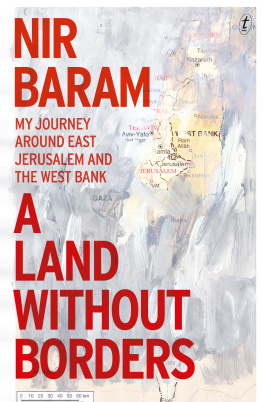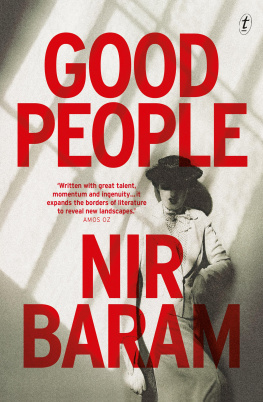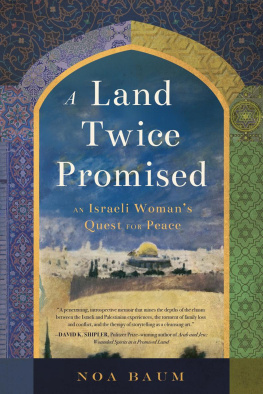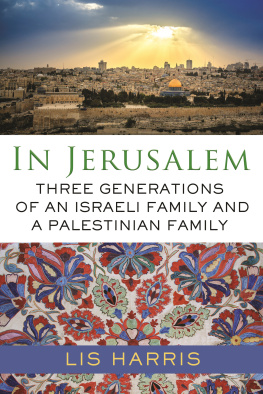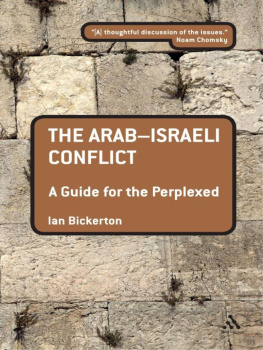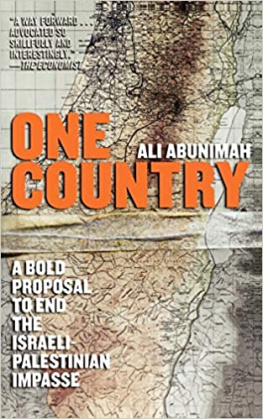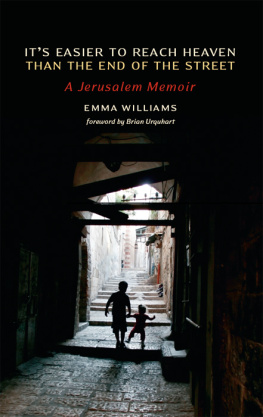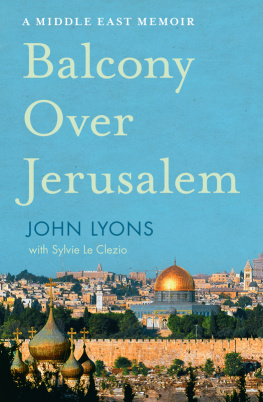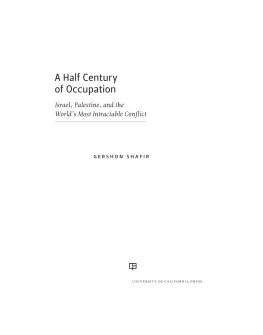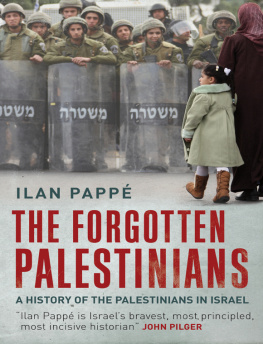
International praise for NIR BARAM and A LAND WITHOUT BORDERS
Baram produced a painful, even shocking travel book.
Although I do not share some of his analysis and his ultimate conclusions, I am still impressed by his sharp eye and his fierce sense of the Israeli Palestinian tragedy. Amos Oz
A book that is a fascinating and charged document about the meaning of home, security and freedom, on both sides of the divide. NRG
Behind the slogans and the messages, Baram exposes a measure of the multifarious world that exists among the lords of the land. Haaretz
Praise for NIR BARAM and GOOD PEOPLE
A pacey, plot-heavy novel of dramatic events and big ideas. Economist
Good People is a richly textured panorama of German and Russian lifeThis ample novel lives most memorably through Barams vignettes of people, dwellings, cities, landscapes and the like that seem to lie, at times, at the periphery of its central concerns. Sydney Morning Herald
Precise and evocative, Good People is a riveting glimpse into a different place and a different time. Canberra Weekly
One of the most intriguing writers in Israeli literature today. Haaretz
A groundbreakerRiveting reading. Qantas Magazine
NIR BARAM was born into a political family in Jerusalem in 1976. His grandfather and father were both ministers in Israeli Labor Party governments. He has worked as a journalist and an editor, and as an advocate for equal rights for Palestinians. Baram began publishing fiction when he was twenty-two, and is the author of five novels, including Good People, which was translated into English for the first time in 2016. His novels have been translated into more than ten languages and have received critical acclaim around the world. He has been shortlisted several times for the Sapir Prize and in 2010 he received the Prime Ministers Award for Hebrew Literature.
JESSICA COHEN is a freelance translator born in England, raised in Israel, and living in Denver. She translates contemporary Israeli prose, poetry, and other creative works. Her translations include critically acclaimed works by major Israeli writers including David Grossman, Etgar Keret, Rutu Modan, Dorit Rabinyan, Ronit Matalon, Amir Gutfreund, and Tom Segev.
textpublishing.com.au
The Text Publishing Company
Swann House, 22 William Street, Melbourne, Victoria 3000, Australia
The Text Publishing Company (UK) Ltd
130 Wood Street, London EC2V 6DL, United Kingdom
Copyright Nir Baram 2015
English translation copyright Jessica Cohen 2016
The moral rights of the author and translator of this work have been asserted.
All rights reserved. Without limiting the rights under copyright above, no part of this publication shall be reproduced, stored in or introduced into a retrieval system, or transmitted in any form or by any means (electronic, mechanical, photocopying, recording or otherwise), without the prior permission of both the copyright owner and the publisher of this book.
First published in Israel, 2015, in Hebrew by Am Oved as In a Land Beyond the Mountains First published in English in 2017 by The Text Publishing Company
Cover design by Text
Page design by Jess Horrocks
Maps by Simon Barnard
Typeset by J&M Typesetting
9781925355222 (Australian paperback)
9781911231080 (UK paperback)
9781922253804 (ebook)
National Library of Australia Cataloguing-in-Publication entry
Creator:Baram, Nir, author.
Title:A land without borders : my journey around East Jerusalem and the West Bank / by Nir Baram; translated from the Hebrew by Jessica Cohen.
Subjects:Arab-Israeli conflict. JerusalemEthnic relations. JerusalemDescription and travel. West BankEthnic relations. West BankDescription and travel.
Other Creators/Contributors: Cohen, Jessica, translator.
Dewey Number: 956.94
CONTENTS
In 2014 I decided to travel the length of the Green Line, the demarcation line agreed in the 1949 armistice agreements between Israel and its neighbors. On the other side of the Green Line is the West Bank, which Israel has now occupied for fifty years, ever since the Six-Day War in 1967. I spent some time in East Jerusalem, too, which Israel has also occupied since 1967. I set off on this journey because I wanted to learn what this place really looks likethis part of the world where I have lived all my life and where (if all goes according to plan) I will live out the rest of my days.
Starting at a very early age, all of us have been bombarded with pictures, maps and news reports about the IsraeliPalestinian conflict. We learned about injustices, wrongdoings, even killingswhether in Jenin, at the Kalandia checkpoint, or at a demonstration near Ramallah. And our immediate response was one of horror. Sometimes, in fact, it seems weve spent most of our lives being horrified. And yet over the past few years Israelis have started to appear fatigued by their horror and its familiar companion: their sense of helplessness. Or is it that they have tired of the horror because of the helplessness? Either way, theyve lost interest in the Palestinians. Most Israelis, and perhaps most people around the world, have concluded that there is no chance of resolving the conflict.
The horror, the indifference and the despair have become shopworn. Its all been said before. But the incredible thing is that the vast majority of Israelisas well as most international spectatorsknow next to nothing about life on the West Bank, the area at the heart of the conflict they have spent their adult lives dissecting. Most Israelis have never visited the occupied territories, unless they were there as part of their military service, and so the debate revolves around a theoretical, ill-defined area sketched out in our political imagination, no less abstract than Syria or the Congo or so many other war-torn lands.
What has become clear in recent years is that very few of us have a comprehensive, accurate picture of the West Bank or the Green Line. This journey was my effort to examine, as frankly as possible, the connection between my own political views and the West Bank reality. Id grown weary of the caf discussions and the conferences at universities or in Geneva, where participants deliberate the finer points of the occupation without knowing where the Green Line actually runs, what a refugee camp looks like, how many people live in the Shomron settlement outposts, or where the separation wall cuts through Bethlehem.
I was driven by a personal motivation, too. Since the age of twenty-one, I have been writing newspaper articles, organizing demonstrations, signing petitions, giving speeches at rallies against the occupation and in support of the traditional two-state solution that aims to resolve the outcomes of the 1967 war. But I had an increasing sense of discomfort: was it possible that although we kept on saying the same things, the West Bank had in fact become a different place? Moreover, as I began to suspect based on what I was hearing from the Palestinians I met, had the issues themselves shifted? I could not help questioning my own positions: were the plans I was advocating implementable anymore? Were we truly acknowledging the core of the conflict? The doubts continued to nag, and I decided I needed to visit the occupied territories. In order to stand on solid political groundas I felt I had done for many yearsand voice an honest perspective, I knew I had to go and see for myself.
Next page
